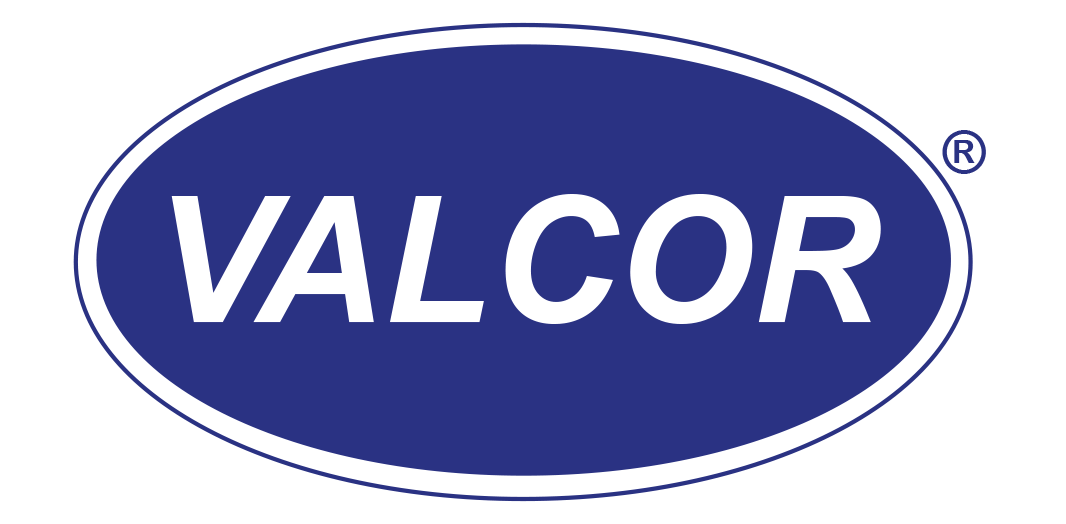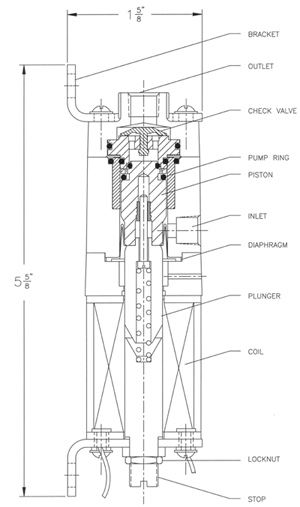Whitepaper: Principles of Operation – SV600 Series Dispensing Pumps
INTRODUCTION
Valcor Scientific, a Division of Valcor Engineering Corporation has designed and manufactured dispensing pumps for precision flows for a broad array of applications for over 40 years.
The SV600 Series pumps are cost-effective, low maintenance dispensers for a wide variety of liquids compatible with stainless steel. Each model provides a different output range.
CONSTRUCTION
The pump materials in contact with fluids are FDA Generally Regarded As Safe grade of polypropylene, borosilicate glass, and elastomers of either PKM, EPDM or silicone. (For less aggressive fluids or those not requiring high-purity contact surfaces, Valcor Scientific offers the SV500 Series of stainless steel dispensing pumps. Please consult the SV500 data sheets for more information.)
GENERAL OPERATION
The accompanying diagram illustrates the internal construction of the SV600 Series pump. A unique feature of these pumps is the employment of a rolling diaphragm to isolate the metal actuator parts from the wetted pump surfaces. The pumps employ Valcor’s exclusive dynamic o-ring pumping system, which divides the wet end of the pump into lower and upper chambers. The o-ring acts as a seal when the coil is de-energized, and the piston is repelled upward by the spring on its dispense stroke. The liquid ahead of the o-ring is pushed out of the upper chamber while liquid is pulled in through the pump inlet. During energization on the return stroke, the o-ring allows “flow-by” of liquid below it into the upper chamber, resulting in a fresh volume ready for discharge. A check valve on the outlet prevents “suck-back” of fluid previously expelled from the pump.
The volume of liquid dispensed per stroke is determined by the piston stroke length, which is set manually. This is done by simply loosening the lock nut on the solenoid stop screw and rotating the screw in or out of the pump. The pumps can be operated to achieve very small single-stroke dispenses or accumulated batches and flow rates by repetitive pulsing.
MORE INFORMATION
A dynamic pump o-ring rides in a grove on the piston. When the solenoid coil is energized, the piston and it’s dynamic pump oring are drawn through the fluid present in the pump chamber – the dynamic o-ring slips (it does not seal in this energization stroke) while the umbrella shaped outlet check valve maintains a seal at its end of the pump.
De-energization of the solenoid coil allows the return spring to push the piston back to its stop with the redundant o-ring seal in its grove against the lower land of the piston as well as the glass cylinder wall, thus creating an output pressure stroke while at the same time creating suction to draw liquid through the inlet port.
The piston return stroke yields the preadjusted volumetric output set by the stroke length on the stop adjusting screw.
The complete pumping cycle requires energizing the solenoid coil momentarily (typically 1/4 second) and de-energizing to permit the fill and output dispense to occur. Individual data sheets specify output capabilities of the various pumps in the SV600 Series.


Recent Comments